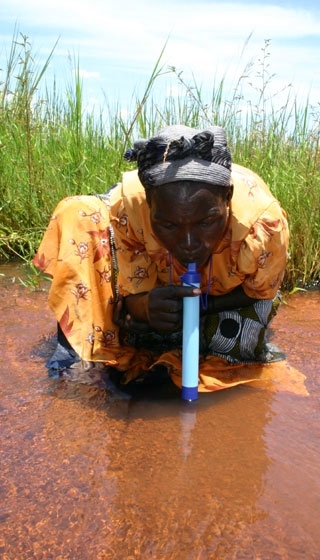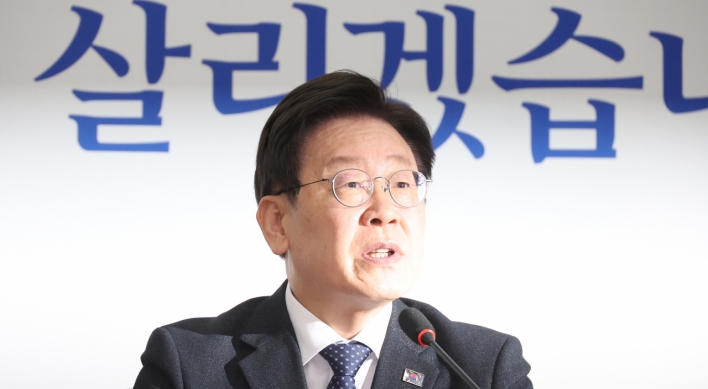This is the fifth installment in an eight-part series that examines the social role of design beyond its aesthetic aspect. The weekly series is a precursor to Herald Design Week 2013 from Oct. 7-11, which will be organized under the theme “Re-imagine the World.” ― Ed.
In poverty-stricken states of sub-Saharan Africa, about 10 percent of people drink any water that is available ― at rivers, lakes and ponds.
About 88 percent of people who die from diarrhea are thought to have consumed unhygienic water.
Finding clean water is the main interest of families in these areas and the burden is mostly shouldered by women. According to the United Nations, the amount of time women in 25 sub-Saharan states spend finding and getting drinking water amounts to 16 million hours a day, stripping them of opportunities for education, employment and other social activities that are intimately related to quality of life.
But two examples of simple design have emerged as solutions to the problem.
In poverty-stricken states of sub-Saharan Africa, about 10 percent of people drink any water that is available ― at rivers, lakes and ponds.
About 88 percent of people who die from diarrhea are thought to have consumed unhygienic water.
Finding clean water is the main interest of families in these areas and the burden is mostly shouldered by women. According to the United Nations, the amount of time women in 25 sub-Saharan states spend finding and getting drinking water amounts to 16 million hours a day, stripping them of opportunities for education, employment and other social activities that are intimately related to quality of life.
But two examples of simple design have emerged as solutions to the problem.

The Lifestraw, a portable water filter created to prevent common waterborne diarrheal diseases, has protected many people from potentially lethal drinking water. The straw is not only used for regular consumption but is also carried by many people as an emergency rescue tool in case they are stranded without access to clean water.
The Q-drum, a durable, donut-shaped plastic barrel which when full holds 50 liters of water, has dramatically reduced the time and energy spent transporting clean water. The container has a central hole through which a rope is tied, allowing one to pull or roll the drum across all terrain types.
These are examples of “appropriate technology design,” which has emerged as a socially responsible and ethical approach to design, at a time when many designers are used to producing state-of-the-art products for only about 10-20 percent of the world’s population.
The basic concept of appropriate technology design is to adopt a readily available form of technology, eliminate “additional” factors which might make the product less attractive to people in the “privileged 10 percent,” and then link up with local communities in need and teach them to produce the product by themselves.
“The important condition of this technology is that the materials used should be attainable in the neighborhoods and at the same time the technology should not be too difficult for the locals to apply,” said Kyungsung University professor Kim Jae-myoung. Kim is currently conducting a three-year research project into adopting the appropriate technology concept in Korea.
Kim said simplicity was core to the design philosophy of appropriate technology products.
“Removing all the additional or unnecessary elements and focusing on the very core function of the model is the fundamental concept of minimalism that has its roots in the Bauhaus movement of the 1930s,” he said. “It looks timeless and classic. When it is colorful, it even looks good,” he said.
But what is more important is that the technology is user-centered and executes the spirit of “design thinking,” a process involving the diagnosis of a problem, designing out a solution, and seeking a brand new way to execute it.
The government and many businesses here have started to embrace appropriate technology as a way of executing overseas development aid or corporate social responsibility. And a growing number of young designers are responding.
Seo Li-won, an industrial design student at Hongik University, placed third in the Appropriate Technology Design competition organized by Hyundai Hysco last year. She developed a recycled plastic pen with ink made from used tea bags.
“When I first heard about India, which was the main subject of the competition, I thought tea ― everyone drinks lots of tea there, regardless of their economic status. I studied and found out that when tannic acid in a bag of tea meets rusted metal, the chemical action turns the water black, just like ink. It became the turning point,” she said. The barrel of the pen was made with discarded marker pens, redesigned into a more ergonomic form.
With the idea, she visited Chennai in India in February and explored the feasibility of her idea.
“People were really impressed because pens were such valuable items to the underprivileged there,” Seo said.
“Some suggested that they create a business with the idea,” said Kim Gi-seok, another winner of the competition.
“It is a total repenting of our selfish industry ― while designers have been wanting the newest, the never-before-seen things, 90 percent of the world cannot even afford to use them. This came as a shock to many people including me,” Kim Jae-myoung said. “Now we are actually designing for people, for the real users,” he said.
By Bae Ji-sook (baejisook@heraldcorp.com)
-
Articles by Korea Herald




![[Herald Interview] 'Amid aging population, Korea to invite more young professionals from overseas'](http://res.heraldm.com/phpwas/restmb_idxmake.php?idx=644&simg=/content/image/2024/04/24/20240424050844_0.jpg&u=20240424200058)






![[Hello India] Hyundai Motor vows to boost 'clean mobility' in India](http://res.heraldm.com/phpwas/restmb_idxmake.php?idx=644&simg=/content/image/2024/04/25/20240425050672_0.jpg&u=)







